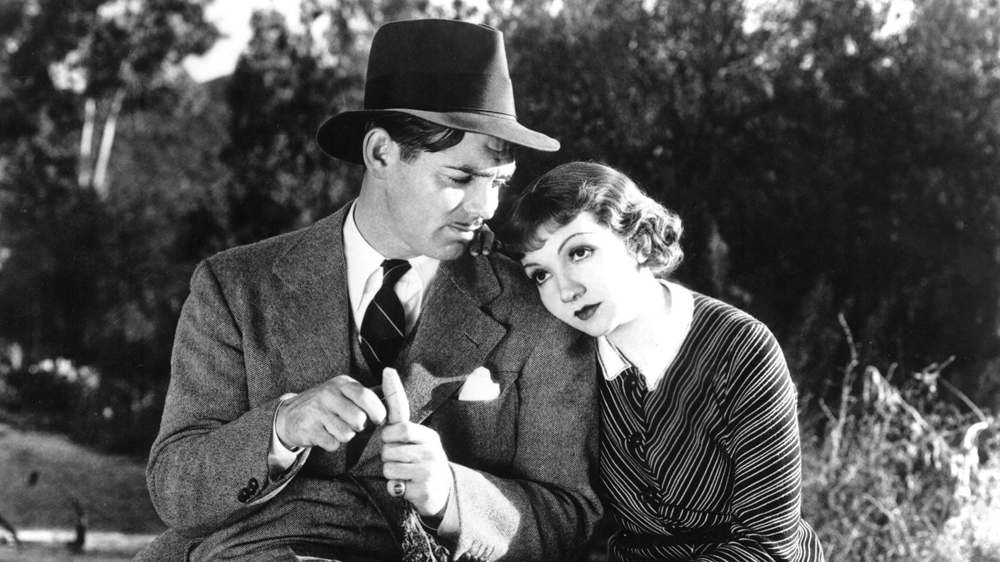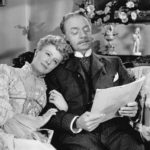If our best lexicographers are to be believed, the term “screwball,” which originated in cricket and then migrated to baseball to describe a ball thrown with a spin (in baseball, sideways), became an American slang term in the 1930s to describe someone who was eccentric, wild, unrestrained—in short, crazy. This was a natural migration of the word, given the similar use of words like “screwy” and phrases like “he’s got a screw loose,” which had been around for some time.
But by the late 1930s, the expression “screwball comedy” was employed to identify a subgenre of the romantic comedy in Hollywood films. Nothing makes people crazier than love, and like someone on the receiving end of a screwball on the cricket pitch or baseball diamond, audiences were kept off their balance by the characters’ madcap, unpredictable behavior in screwball comedies.
As is the case with film noir, screwball comedies can be defined in such a limited way that very few make the grade, or the defining characteristics can be broadened to include more movies. But still more than in film noir’s case, even pinning down what defines the undoubted cases can be difficult. Is it screwball if the couple fated to fall in love start out hostile to one another? Maybe, but this isn’t true of every screwball comedy, and it’s true of many romantic comedies that aren’t screwball. Is it screwball if the madcap character is a woman, and her fella is the straight man? Maybe, but it can be the other way around, too—and sometimes the roles of unpredictable nutcase and put-upon victim will be reversed mid-picture. Does the screwball comedy depict conflicts between the social classes as well as between the sexes? Sometimes, but not always.
In the end, what makes a romantic comedy a screwball may be a matter of pacing and sensibility. Significant parts of a screwball—sometimes the entire movie—come right at the viewer at breakneck speed, and the overall experience of the film is that you are on a roller coaster wearing blinders, so that you cannot see around the curves. The whole ride is a blast, and it’s over more quickly than you thought it would be—or perhaps hoped it would be. The screwball comedy is made by the right combination of writing, directing, and casting—and then somehow it all clicks, and you’re off, cheering for the lovers on the twists and turns they take to the inevitable happy ending.
Start your day with Public Discourse
Sign up and get our daily essays sent straight to your inbox.There does seem to be an unusual dependence in the screwball comedy on the quality of the leading lady. Only a handful of actresses did more than one or two movies in this subgenre, and each brought something different to it. Watch Claudette Colbert’s wide-eyed impetuosity in It Happened One Night (1934, the Frank Capra flick that is said to have started it all), It’s a Wonderful World (1939), or The Palm Beach Story (1942). Or check out Carole Lombard’s frankly sexy “I’ll have things my own way” attitude in My Man Godfrey (1936), Nothing Sacred (1937), or Mr. and Mrs. Smith (1941). Or observe Irene Dunne’s sly humor in Theodora Goes Wild (1936, sadly not available for streaming), The Awful Truth (1937), or My Favorite Wife (1940). Or marvel at Barbara Stanwyck’s gimlet-eyed girl on the make in The Mad Miss Manton (1938), Ball of Fire (1940), or The Lady Eve (1941).
Some actresses took one shot at the screwball, even if it was against type, and the results were memorable. When Katharine Hepburn made Bringing Up Baby (1938) with Cary Grant and director Howard Hawks, reviews were mixed and profits were poor. Hepburn was declared “box office poison” until she returned with the romantic (but not screwball) comedy The Philadelphia Story (1940). She never did screwball again, but Bringing Up Baby is now recognized as a classic of the type. Rosalind Russell, a first-class comedienne, did only one true screwball (also with Cary Grant and Howard Hawks), His Girl Friday (1940). Even Bette Davis took one turn on the roller coaster, making The Bride Came C.O.D. (1940) with James Cagney.
Perhaps the most interesting case of all is that of Jean Arthur, the girl-next-door star of many romantic comedies, and a favorite of director Frank Capra, who cast her opposite James Stewart in You Can’t Take It With You (1938) and Mr. Smith Goes to Washington (1939). Were any of the following films of Arthur’s screwball comedies: If You Could Only Cook (1935), Easy Living (1937, not streaming), The Talk of the Town (1942), or The More the Merrier (1943)? I would say certainly the last one was, but each viewer should watch and decide. And Jean Arthur was always worth watching.
Some of Hollywood’s best makers of screwball comedies graduated from writing them to also directing them. Two in particular stand out. Preston Sturges had written (among many other films) Easy Living for Mitchell Leisen, and went on to direct such uproarious screwballs as The Lady Eve, The Palm Beach Story, and The Miracle of Morgan’s Creek (1944). And Billy Wilder, who had written Ninotchka (1939) for Ernst Lubitsch and Ball of Fire for Howard Hawks, at last got his chance to begin his distinguished directing career with The Major and the Minor (1942), a film that flirted almost dangerously with the idea of a grown man (Ray Milland) tumbling for a woman (Ginger Rogers) he takes to be an adolescent girl.
What is it, finally, that makes screwball comedies so much fun? I’d say that with their manic scripts and their depiction of characters of both sexes who will say anything and do anything for love, they bring together men and women—whose senses of humor often differ sharply—to laugh at the same crazy antics, and to see what mad joy love can be. In the summer of COVID, as we stay home with our loved ones, the screwball may be just what the doctor ordered.
(An earlier version of this essay referred to a screwball in cricket and baseball as having a backspin. In baseball, a screwball has a sideways spin. The author regrets not knowing that an ordinary fastball has a backspin!)














